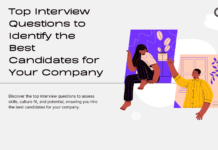Key Takeaways
- The global talent gap arises from a mismatch between employer needs and available workforce skills, impacting industries worldwide.
- Businesses face higher costs, reduced innovation, and productivity losses due to growing talent shortages across critical sectors.
- Companies can address the gap through reskilling initiatives, strategic hiring practices, and embracing global and remote talent pools.
In today’s increasingly interconnected and fast-evolving global economy, businesses face a wide range of challenges that threaten their ability to grow, innovate, and remain competitive.
Among these challenges, one issue has become particularly critical in recent years: the global talent gap.
The term “global talent gap” refers to the widening disparity between the skills that employers need and the skills that are currently available in the workforce.
As industries continue to advance with the rise of new technologies, and as demographic shifts reshape the labor market, the shortage of qualified professionals has become a pressing concern for companies across virtually every sector.

The global talent gap is not merely a localized or industry-specific issue; it is a widespread phenomenon that impacts businesses of all sizes, from multinational corporations to small and medium-sized enterprises.
According to leading research reports, millions of jobs around the world are going unfilled because organizations cannot find candidates with the necessary qualifications.
In fields like technology, healthcare, manufacturing, engineering, and financial services, the demand for skilled workers far outpaces the supply, creating a competitive and costly environment for hiring and retention.
Several factors have contributed to the growing global talent shortage. Rapid technological advancements have led to the creation of new roles and skill requirements that traditional education systems are often too slow to accommodate. Demographic changes, such as aging populations in developed countries and declining birth rates, have resulted in a shrinking pool of working-age individuals. Additionally, globalization and evolving expectations around work flexibility have shifted the dynamics of talent acquisition, making it even more complex for businesses to find the right candidates with the right skills at the right time.
The consequences of the global talent gap are far-reaching and profound. Businesses are experiencing increased operational costs due to higher wages, recruiting fees, and training expenses. Project timelines are being extended, innovation is slowing, and productivity is declining as teams struggle to operate with limited resources. Companies that fail to address these talent shortages risk falling behind more agile and better-staffed competitors, ultimately jeopardizing their market position and long-term success.
In this blog, we will explore the concept of the global talent gap in greater depth, examine the root causes behind its rise, and discuss the specific ways it is impacting businesses around the world. Furthermore, we will provide actionable insights into strategies that organizations can implement to bridge the talent gap, including upskilling initiatives, remote hiring practices, partnerships with educational institutions, and the integration of automation technologies. By understanding the global talent gap and proactively addressing its challenges, businesses can better position themselves to thrive in an increasingly competitive and uncertain economic landscape.
Whether you are a business leader, an HR professional, or a policymaker, gaining a clear understanding of the global talent gap is essential for navigating the future of work. As the competition for skilled talent intensifies, those who are prepared to adapt and invest in their workforce will be the ones who secure a sustainable competitive advantage in the years to come.
Before we venture further into this article, we would like to share who we are and what we do.
About 9cv9
9cv9 is a business tech startup based in Singapore and Asia, with a strong presence all over the world.
With over nine years of startup and business experience, and being highly involved in connecting with thousands of companies and startups, the 9cv9 team has listed some important learning points in this overview of What is Global Talent Gap & Its Impact On Businesses.
If your company needs recruitment and headhunting services to hire top-quality employees, you can use 9cv9 headhunting and recruitment services to hire top talents and candidates. Find out more here, or send over an email to [email protected].
Or just post 1 free job posting here at 9cv9 Hiring Portal in under 10 minutes.
What is Global Talent Gap & Its Impact On Businesses
- What is the Global Talent Gap?
- Causes of the Global Talent Gap
- The Impact of the Global Talent Gap on Businesses
- Strategies Businesses Can Use to Address the Global Talent Gap
- Future Outlook: Will the Global Talent Gap Worsen or Improve?
1. What is the Global Talent Gap?
The global talent gap has become one of the most pressing issues affecting businesses, economies, and societies worldwide. It refers to the mismatch between the skills that employers need and the skills that the available workforce can offer. This section provides a comprehensive breakdown of what the global talent gap entails, why it exists, and examples of industries where its impact is most evident.
Definition and Explanation
- Global Talent Gap Explained:
- Refers to the shortage of skilled workers needed to fill critical roles across industries.
- Occurs when there is a disparity between the demand for specific competencies and the supply of qualified candidates.
- Impacts businesses’ ability to innovate, scale, and remain competitive in both local and international markets.
- Scope of the Talent Gap:
- Affects multiple industries, not limited to any single sector or region.
- Particularly prominent in sectors undergoing rapid technological transformation.
- Real-World Example:
- The World Economic Forum reported that by 2030, more than 85 million jobs could go unfilled globally due to a lack of skilled talent, especially in fields like information technology, engineering, and healthcare.
Key Industries Affected by the Global Talent Gap
- Technology Sector:
- Demand for software developers, cybersecurity experts, AI specialists, and data scientists far outpaces supply.
- Example: In the United States, there were over 700,000 unfilled cybersecurity jobs as of 2023, illustrating the widening tech skills gap.
- Healthcare Industry:
- Shortages of doctors, nurses, and allied health professionals are intensifying due to aging populations and increased healthcare demands.
- Example: The World Health Organization (WHO) predicts a global shortfall of 10 million healthcare workers by 2030, particularly in low- and middle-income countries.
- Manufacturing and Engineering:
- A lack of skilled trade workers, mechanical engineers, and production specialists is slowing down industrial growth.
- Example: The U.S. manufacturing industry is projected to have 2.1 million unfilled jobs by 2030, largely due to skill shortages.
- Financial Services and Fintech:
- Demand for experts in blockchain, digital payments, and financial analytics is growing rapidly.
- Example: A 2024 LinkedIn report highlighted a 35% year-over-year increase in demand for fintech specialists globally.
- Renewable Energy and Sustainability:
- Industries pushing for green energy transitions require highly specialized engineers and technicians.
- Example: The International Renewable Energy Agency (IRENA) estimates that the renewable energy sector will need 30 million skilled workers by 2030.
Causes of the Global Talent Gap
- Technological Advancements:
- Rapid digital transformation creates new roles that education systems struggle to keep up with.
- Example: The emergence of AI and machine learning roles has far outpaced the number of graduates qualified in these areas.
- Aging Workforce:
- In many developed countries, large portions of the workforce are reaching retirement age without sufficient younger replacements.
- Example: Japan faces a severe talent shortage due to its aging population, with nearly 28% of its population over 65 years old.
- Skills Mismatch:
- A disconnect between what students are trained for and what industries actually require.
- Example: Many graduates hold degrees in fields with limited job prospects, while fields like coding, analytics, and technical trades remain underserved.
- Globalization and Migration Barriers:
- Immigration policies, geopolitical instability, and travel restrictions limit the movement of skilled workers across borders.
- Example: Post-Brexit UK has faced significant challenges in recruiting skilled labor, especially in healthcare and construction.
- Changing Workforce Expectations:
- Younger generations prioritize flexibility, remote work, and work-life balance, leading to shifts in where and how they choose to work.
- Example: Many companies struggle to fill in-office roles because candidates prefer remote or hybrid working models.
The Widening Gap: Future Projections
- Increasing Demand for Digital Skills:
- Cloud computing, artificial intelligence, and cybersecurity will dominate future job markets.
- Example: Research indicates that digital roles will account for 65% of new jobs created over the next decade.
- Emergence of New Job Categories:
- Roles like “AI Ethics Specialist” and “Green Technology Advisor” are emerging faster than educational programs can prepare graduates.
- Global Economic Implications:
- The global talent shortage could result in $8.5 trillion in unrealized annual revenues by 2030 if left unaddressed, according to Korn Ferry’s global talent study.
By understanding what the global talent gap is, where it is most pronounced, and the reasons behind its expansion, businesses can better anticipate the challenges ahead. Addressing this growing gap is crucial not only for individual organizational success but also for the broader advancement of global economies.
2. Causes of the Global Talent Gap
Understanding the root causes of the global talent gap is essential for businesses, policymakers, and educators seeking to address this growing challenge. Several interrelated factors contribute to the mismatch between the skills available in the workforce and those required by industries. Below, we break down the primary causes of the global talent gap with real-world examples and data to illustrate the problem.
Rapid Technological Advancements
- Emergence of New Technologies:
- Technologies such as artificial intelligence, machine learning, blockchain, and quantum computing are creating new job categories.
- Traditional education systems often lag behind in updating curricula to match these fast-evolving fields.
- Example: The rise of AI specialists, cloud architects, and data scientists has led to widespread shortages because universities have only recently begun offering specialized programs.
- Digital Transformation Across Industries:
- Sectors such as finance, healthcare, retail, and logistics are undergoing rapid digitalization.
- Businesses now require employees with expertise in digital tools, data analytics, and cybersecurity, skills that were not emphasized even a decade ago.
- Example: In the retail sector, companies shifting toward e-commerce platforms demand digital marketing and e-commerce management skills, creating new labor gaps.
Skills Mismatch Between Education and Industry Needs
- Outdated Academic Curriculums:
- Many educational institutions continue to offer programs that do not align with the practical skills employers seek.
- There is a lack of emphasis on vocational training and STEM (Science, Technology, Engineering, Mathematics) education.
- Example: While millions graduate globally with general business degrees, there remains a severe shortage of graduates trained in coding, cybersecurity, and renewable energy technologies.
- Insufficient Soft Skills Development:
- Critical thinking, communication, adaptability, and problem-solving are increasingly vital but are not systematically taught in formal education systems.
- Example: Surveys by LinkedIn consistently show that employers rank soft skills as equally important as technical skills, yet they find these abilities lacking among new hires.
Demographic Shifts and Aging Populations
- Retirement of Skilled Workers:
- An aging workforce is leading to significant retirements, particularly in developed economies such as Japan, Germany, and the United States.
- Example: In the United States, the manufacturing industry faces a major loss of experienced workers, with over 2.7 million baby boomers expected to retire by 2025.
- Declining Birth Rates:
- Low birth rates in many regions are shrinking the future talent pool.
- Example: Countries like South Korea and Italy are witnessing dramatic population declines, posing severe risks to labor force sustainability.
- Generational Shifts in Work Preferences:
- Younger generations prioritize flexibility, purpose-driven work, and work-life balance over traditional career paths.
- Example: Many millennials and Gen Z workers are more likely to pursue freelance or entrepreneurial opportunities instead of traditional corporate roles.
Globalization and Barriers to Talent Mobility
- Restrictive Immigration Policies:
- Tightened visa regulations and immigration controls have limited the ability of businesses to recruit talent internationally.
- Example: The United States’ H-1B visa cap has resulted in thousands of skilled tech professionals being unable to work in the country each year.
- Geopolitical Instability:
- Political unrest, wars, and economic instability disrupt talent flow between countries.
- Example: The ongoing conflict in Ukraine has displaced millions, disrupting talent availability across Eastern Europe and impacting industries such as IT outsourcing.
- Increased Competition for Global Talent:
- High-demand skills are aggressively sought after by companies worldwide, leading to fierce competition for a limited pool of experts.
- Example: Countries like Canada and Australia have launched aggressive talent attraction programs to lure skilled immigrants, intensifying competition among nations.
Insufficient Investment in Workforce Development
- Lack of Continuous Training Programs:
- Many companies fail to invest adequately in upskilling and reskilling their existing employees.
- Example: Despite knowing the risks of automation, many businesses do not offer digital skills training to their current workforce, exacerbating the talent gap.
- Underfunded Educational Systems:
- Limited funding for public education and vocational training programs hampers the development of necessary technical skills.
- Example: In several developing countries, lack of access to quality technical education prevents the creation of a future-ready workforce.
- Slow Adoption of Lifelong Learning Culture:
- Workers must continually upgrade their skills to remain relevant, but many regions lack a strong culture of lifelong learning.
- Example: In some European countries, less than 20% of adults participate in continuing education programs each year, according to OECD reports.
Technological Displacement and Automation
- Job Displacement Due to Automation:
- Automation of routine tasks is displacing certain job roles faster than new ones are being created.
- Example: In manufacturing, the introduction of industrial robots has reduced the need for assembly line workers but increased demand for robotics engineers and maintenance specialists.
- Creation of New Skill Demands:
- Technologies such as autonomous vehicles, augmented reality, and biotechnology are generating entirely new skill requirements.
- Example: Autonomous vehicle companies require AI engineers and sensor technology specialists—skills that are still rare in the global job market.
Understanding the multifaceted causes of the global talent gap highlights the urgency for collaborative efforts among businesses, educational institutions, and governments. Addressing these root causes is essential to building a resilient and future-ready workforce capable of meeting the demands of the evolving global economy.
3. The Impact of the Global Talent Gap on Businesses
The global talent gap is not just a human resource issue; it directly affects business operations, competitiveness, and long-term growth. Companies across all industries are feeling the pressure of not being able to find the right people with the right skills at the right time. Below is a comprehensive breakdown of how the global talent shortage impacts businesses worldwide, supported with relevant examples.
Reduced Operational Efficiency
- Increased Workload on Existing Employees:
- Shortages force existing staff to take on additional responsibilities, leading to overwork and burnout.
- Example: In the healthcare sector, a lack of qualified nurses results in higher patient-to-nurse ratios, increasing stress and reducing care quality.
- Delays in Project Timelines:
- Inadequate staffing leads to missed deadlines and project overruns.
- Example: Tech companies experience delays in software development when they cannot hire enough skilled programmers, impacting product launch dates.
- Compromised Service Quality:
- Skill shortages mean companies may compromise on service quality to maintain output.
- Example: In the hospitality industry, understaffed hotels deliver lower customer service standards, affecting guest satisfaction and brand loyalty.
Increased Recruitment and Labor Costs
- Higher Salaries to Attract Talent:
- Businesses often have to offer significantly higher salaries and bonuses to secure scarce talent.
- Example: Cybersecurity specialists in high demand can command salaries 20% to 30% higher than market averages, particularly in industries like finance and government.
- Expensive Recruitment Processes:
- Prolonged hiring processes and reliance on specialized recruiters drive up hiring costs.
- Example: Engineering firms sometimes spend months and substantial resources using headhunting agencies to fill critical technical roles.
- Rising Costs of Outsourcing and Temporary Staffing:
- Companies turn to external vendors or temporary staffing agencies to fill gaps, which often come at a premium.
- Example: IT firms increasingly outsource software development to countries like India and Vietnam to cope with domestic talent shortages, despite additional management complexities.
Stifled Innovation and Growth
- Inability to Implement New Technologies:
- Lack of skilled personnel delays the adoption of cutting-edge technologies, hampering digital transformation.
- Example: Manufacturing firms struggle to adopt Industry 4.0 technologies like IoT and AI-driven automation due to a shortage of tech-savvy engineers.
- Reduced Competitive Advantage:
- Companies unable to innovate lose their edge to more agile competitors.
- Example: In the financial services industry, fintech startups with strong tech teams outpace traditional banks that face chronic talent shortages in areas like blockchain and data science.
- Limitations on Expansion Plans:
- Business growth plans are often put on hold due to the inability to scale the workforce.
- Example: Fast-growing startups may delay international expansions because they cannot find enough local talent to establish regional offices.
Decreased Employee Morale and Retention
- Increased Employee Turnover:
- Overburdened employees are more likely to seek opportunities elsewhere, further exacerbating the talent gap.
- Example: Surveys show that tech professionals frequently leave companies that fail to invest in their professional development, citing burnout as a key reason.
- Lower Employee Engagement:
- Workers in understaffed organizations often report lower satisfaction and motivation levels.
- Example: Gallup’s State of the Global Workplace report consistently links talent shortages to declining employee engagement scores.
- Negative Workplace Culture:
- Persistent staffing challenges can create a toxic work environment, characterized by frustration, poor communication, and decreased collaboration.
- Example: Sales teams facing aggressive targets without sufficient personnel support may experience increased internal conflicts and lowered morale.
Compromised Customer Satisfaction and Brand Reputation
- Inability to Meet Customer Expectations:
- Service disruptions, product delivery delays, and poor support services result from understaffing.
- Example: E-commerce platforms facing logistics workforce shortages during peak seasons, like Black Friday, often see a spike in customer complaints and returns.
- Brand Damage Due to Poor Experiences:
- Negative customer experiences quickly spread through social media and review platforms, harming the brand’s reputation.
- Example: Airlines that suffer from pilot and crew shortages frequently experience flight delays and cancellations, leading to public backlash and diminished brand loyalty.
Strategic and Financial Risks
- Higher Risk Exposure:
- Gaps in critical functions like cybersecurity, compliance, and risk management expose businesses to greater risks.
- Example: Organizations lacking qualified cybersecurity teams face increased vulnerability to ransomware attacks and data breaches, leading to regulatory penalties and loss of customer trust.
- Revenue Loss:
- Inability to fulfill contracts or deliver products on time can directly impact revenues and profitability.
- Example: Consulting firms that cannot staff client projects quickly lose contracts worth millions, leading to significant financial setbacks.
- Investor Confidence Erosion:
- Consistent staffing issues can affect a company’s valuation and deter potential investors.
- Example: Venture capitalists often scrutinize a startup’s talent acquisition capabilities before investing, making chronic talent shortages a red flag.
Increased Dependency on Automation and AI
- Automation as a Short-Term Solution:
- Companies increasingly invest in automation to compensate for the lack of human resources.
- Example: Retailers deploy self-checkout systems and automated warehouses to mitigate shortages in frontline workers.
- New Skill Gaps Emerge:
- While automation fills immediate needs, it simultaneously creates new gaps for technical maintenance, programming, and system optimization.
- Example: The introduction of robotics in warehouses demands a new workforce proficient in robot maintenance and AI systems, which again becomes difficult to source.
The global talent gap significantly reshapes how businesses operate, compete, and grow. Its widespread effects ripple across every sector, from small startups to multinational corporations, necessitating proactive and strategic approaches to workforce planning and development.
4. Strategies Businesses Can Use to Address the Global Talent Gap
Addressing the global talent gap requires businesses to adopt proactive, innovative, and long-term strategies. Companies that invest in sustainable workforce development initiatives not only bridge existing skill shortages but also future-proof their operations against evolving industry demands. Below is a comprehensive exploration of the key strategies businesses can implement.
Upskilling and Reskilling Existing Employees
- Investing in Professional Development:
- Offer continuous learning opportunities to current employees through workshops, certifications, and training programs.
- Example: Amazon committed over $700 million to upskill 100,000 employees by 2025 through programs like “Machine Learning University” and “AWS Training and Certification.”
- Creating Tailored Learning Pathways:
- Develop personalized training programs aligned with future business needs.
- Example: AT&T launched a “Future Ready” initiative, helping employees transition into roles related to software engineering, cybersecurity, and data science.
- Encouraging a Learning Culture:
- Promote a workplace environment where ongoing education is valued and supported.
- Example: IBM implemented “Your Learning,” an AI-driven platform offering personalized learning experiences to employees.
Enhancing Talent Acquisition Strategies
- Widening the Talent Pool:
- Recruit candidates from non-traditional backgrounds, including bootcamp graduates, veterans, and self-taught professionals.
- Example: Google and Apple have relaxed degree requirements for several roles, focusing more on skills and experience.
- Leveraging Remote Work:
- Tap into global talent by offering remote or hybrid work opportunities.
- Example: GitLab operates as an all-remote company, successfully sourcing talent from over 60 countries.
- Building Strong Employer Brands:
- Invest in employer branding initiatives to attract top talent.
- Example: Salesforce emphasizes its company culture and commitment to equality and innovation to stand out in a competitive talent market.
Forming Strategic Partnerships with Educational Institutions
- Collaborating with Universities and Colleges:
- Partner with academic institutions to shape curriculum and create job-ready graduates.
- Example: Microsoft partners with colleges to create cybersecurity training programs tailored to industry needs.
- Offering Internship and Apprenticeship Programs:
- Provide real-world experience opportunities to students and young professionals.
- Example: Siemens offers dual education programs combining classroom instruction with on-the-job training.
- Sponsoring Scholarships and Competitions:
- Invest in scholarship programs to encourage underrepresented groups to enter critical fields.
- Example: Google’s Women Techmakers Scholarship supports women pursuing computer science degrees globally.
Embracing Technology and Automation
- Implementing AI and Machine Learning Solutions:
- Use AI to automate repetitive tasks and free up human talent for more complex work.
- Example: Financial firms are automating compliance reporting, allowing staff to focus on analysis and strategy.
- Using Talent Analytics:
- Deploy HR analytics tools to forecast talent needs and identify skill gaps early.
- Example: IBM’s Watson Analytics helps HR departments predict employee turnover and plan workforce strategies accordingly.
- Investing in Automation for Low-Skill Tasks:
- Automate administrative and operational roles to reallocate human resources to higher-value tasks.
- Example: Manufacturing companies automate assembly lines while retraining workers for maintenance and supervision roles.
Fostering Diversity, Equity, and Inclusion (DEI) Initiatives
- Creating Inclusive Hiring Practices:
- Develop hiring processes that minimize bias and encourage diversity.
- Example: Accenture implements structured interviews and diverse interview panels to promote fair hiring.
- Supporting Employee Resource Groups (ERGs):
- Encourage the formation of ERGs that support different backgrounds and communities.
- Example: Microsoft has over a dozen ERGs, including groups focused on women, veterans, and LGBTQIA+ employees.
- Developing Leadership Pipelines for Diverse Talent:
- Identify and nurture high-potential individuals from underrepresented backgrounds for leadership roles.
- Example: PwC’s “Aspire to Lead” initiative supports leadership development for women and minority groups.
Adopting Flexible Work Models
- Offering Remote and Hybrid Work Options:
- Attract a broader range of talent by providing flexible work arrangements.
- Example: Spotify introduced a “Work From Anywhere” program, allowing employees to work remotely across different locations.
- Providing Flexible Hours:
- Allow flexible scheduling to accommodate employees’ different lifestyles and needs.
- Example: Dell’s flexible work policies help retain parents, caregivers, and individuals with diverse working styles.
- Supporting Global Mobility:
- Enable employees to work in different regions or countries temporarily.
- Example: Deloitte offers global mobility programs that allow employees to take international assignments to develop skills.
Investing in Talent Retention and Employee Engagement
- Enhancing Employee Wellbeing Programs:
- Offer comprehensive mental health support, wellness initiatives, and work-life balance programs.
- Example: Salesforce provides employees with wellbeing reimbursement programs, mental health days, and meditation apps.
- Recognizing and Rewarding Contributions:
- Implement recognition programs to appreciate employees’ achievements and foster loyalty.
- Example: Zappos is known for its strong employee recognition culture, using peer-to-peer rewards systems.
- Providing Clear Career Pathways:
- Define and communicate transparent career development opportunities.
- Example: Adobe’s “Check-In” system replaced traditional annual reviews with regular career conversations between managers and employees.
Utilizing Global Talent Acquisition Platforms
- Partnering with International Recruitment Agencies:
- Leverage agencies with global networks to access talent pools in emerging markets.
- Example: Companies like Infosys partner with global recruiters to fill IT roles across North America and Europe.
- Tapping Into Freelance and Gig Economy Platforms:
- Source specialized skills from freelancers and contractors for short-term or project-based needs.
- Example: Upwork and Toptal offer access to highly skilled professionals in fields like web development, graphic design, and data analytics.
- Building Global Talent Pipelines:
- Establish a long-term strategy to cultivate relationships with potential candidates worldwide.
- Example: Multinationals maintain talent communities through career websites, webinars, and networking events.
By strategically implementing these approaches, businesses can not only address immediate skill shortages but also build resilient, future-ready workforces. Companies that prioritize workforce development, diversity, technological adoption, and flexible working models are better positioned to thrive in an increasingly competitive global marketplace.
5. Future Outlook: Will the Global Talent Gap Worsen or Improve?
As global industries undergo digital transformation and societal shifts, the future of the talent gap remains a critical concern for business leaders, policymakers, and educational institutions alike. The future trajectory will largely depend on how proactively countries, companies, and individuals adapt to the changing labor landscape. Below is a detailed exploration of the key factors influencing whether the global talent gap will widen or narrow.
Factors Suggesting the Talent Gap May Worsen
- Accelerating Technological Advancements:
- Rapid growth in fields like artificial intelligence, quantum computing, and biotechnology is creating skill demands faster than traditional education systems can meet.
- Example: McKinsey Global Institute reports that by 2030, about 375 million workers may need to switch occupational categories due to automation and AI.
- Insufficient Reskilling Initiatives:
- Many companies and governments are still slow in implementing effective reskilling programs.
- Example: A World Economic Forum survey indicated that only 21% of companies feel they have the resources to implement large-scale reskilling initiatives.
- Aging Workforce in Developed Economies:
- In regions like Europe, Japan, and North America, large sections of the workforce are nearing retirement without enough younger skilled workers to replace them.
- Example: Germany is projected to face a shortage of 3 million skilled workers by 2030 due to demographic aging.
- Global Educational Disparities:
- Uneven access to quality education in developing regions continues to create skill gaps.
- Example: UNESCO reports that nearly 250 million children globally are not acquiring basic literacy and numeracy skills, limiting future workforce readiness.
- Mismatch Between Educational Curricula and Industry Needs:
- Many academic institutions are not updating their programs quickly enough to match evolving business and technological requirements.
- Example: According to the OECD, 40% of employers find it difficult to hire candidates with the necessary technical and soft skills, even among graduates.
Factors Suggesting the Talent Gap May Improve
- Increased Focus on Lifelong Learning:
- Companies and individuals are increasingly embracing continuous education to stay relevant.
- Example: Coursera, Udemy, and edX are seeing record enrollments as professionals seek flexible, affordable upskilling opportunities.
- Rise of Public-Private Partnerships:
- Collaborative initiatives between governments, educational institutions, and businesses are creating workforce development programs at scale.
- Example: IBM’s “P-TECH” model offers high school students pathways to earn STEM degrees and gain industry mentorships, directly addressing skill shortages.
- Globalization of Talent Through Remote Work:
- Remote work is enabling companies to source skilled labor globally, reducing regional skill gaps.
- Example: Companies like Zapier and GitLab have fully remote workforces, allowing them to tap into talent from diverse and underrepresented markets.
- Advancements in EdTech and Digital Learning Platforms:
- Technologies like AI tutors, VR training environments, and adaptive learning platforms are making education more accessible and effective.
- Example: Duolingo and Khan Academy are using AI to personalize learning experiences, helping bridge foundational education gaps at scale.
- Emergence of Skills-Based Hiring Practices:
- Companies are increasingly hiring based on skills and competencies rather than traditional degrees.
- Example: LinkedIn’s “Skills Path” initiative connects employers with candidates based on demonstrated abilities, rather than educational background.
Industries Likely to Influence Future Trends
- Technology Sector:
- Tech companies will continue to drive demand for AI, cybersecurity, data analytics, and cloud computing skills.
- Example: The U.S. Bureau of Labor Statistics projects a 35% growth in data science roles between 2022 and 2032.
- Healthcare Industry:
- Aging populations and health tech innovations will expand needs for medical professionals, bioengineers, and health IT experts.
- Example: WHO estimates a global shortfall of 10 million health workers by 2030, particularly in low- and middle-income countries.
- Renewable Energy and Sustainability Fields:
- The global shift toward sustainability is creating a demand for green jobs such as wind turbine technicians and solar photovoltaic installers.
- Example: The International Renewable Energy Agency (IRENA) predicts the renewable energy sector will support 38 million jobs by 2030.
- Manufacturing and Supply Chain Management:
- As industries embrace smart manufacturing (Industry 4.0), the need for skilled technicians, engineers, and logistics specialists will rise.
- Example: Deloitte’s 2021 report highlights a potential 2.1 million unfilled manufacturing jobs in the U.S. by 2030.
Potential Future Challenges in Bridging the Talent Gap
- Reskilling at Scale:
- It remains uncertain whether reskilling programs can reach a wide enough audience quickly and affordably.
- Example: According to the World Economic Forum, $24 billion will be needed to reskill 25% of the global workforce by 2030.
- Maintaining Workforce Inclusivity:
- Ensuring marginalized and underrepresented groups have equal access to education and opportunities is crucial.
- Example: Only 26% of AI professionals globally are women, according to the World Economic Forum, highlighting gender disparities in emerging fields.
- Keeping Pace with New Skill Demands:
- Future jobs will likely require a blend of soft skills, digital literacy, and domain expertise, making it harder for workers to keep up.
- Example: A report by Dell Technologies forecasts that 85% of the jobs that will exist in 2030 have not yet been invented.
Final Thoughts on the Future Outlook
- Worsening is Likely Without Immediate Action:
- Without major investments in education, reskilling, and talent mobility, the global talent gap could expand further over the next decade.
- Improvement is Possible with Strategic Initiatives:
- Companies, governments, and individuals that prioritize agility, inclusivity, and innovation in workforce development strategies can reverse the trend.
- Need for Global Collaboration:
- Addressing the global talent gap effectively requires collaborative international efforts, public-private partnerships, and a shared commitment to future-ready education and workforce planning.
Conclusion
The global talent gap is no longer a distant concern; it is a pressing reality that is reshaping industries, economies, and societies worldwide. As explored throughout this discussion, the global talent gap refers to the mismatch between the skills employers urgently require and the available talent pool’s current capabilities. Driven by a range of factors, including rapid technological advancement, educational disparities, demographic shifts, and evolving business needs, this widening gap presents significant challenges for companies across various sectors.
The impact of the global talent gap on businesses is profound and multifaceted. Organizations face higher operational costs, reduced productivity, innovation slowdowns, and increased employee turnover rates. For industries heavily reliant on technical expertise, such as technology, healthcare, manufacturing, and renewable energy, the talent gap threatens to hinder growth, delay projects, and weaken competitive positioning. Furthermore, businesses operating in regions with an aging workforce or limited access to quality education are particularly vulnerable to the negative effects of this phenomenon.
However, the future is not without hope. The talent gap, while challenging, also presents an opportunity for transformation. Companies that proactively invest in strategic workforce planning, continuous employee development, and inclusive hiring practices can position themselves to not only survive but thrive in the evolving global economy. Initiatives such as skills-based hiring, remote work adoption, public-private partnerships, and the use of advanced digital learning platforms are already demonstrating positive results in bridging the divide.
Moreover, there is growing momentum around global collaboration to address these issues. Governments, educational institutions, and corporations are increasingly recognizing the urgent need to align curricula with future job market demands, invest in scalable reskilling initiatives, and create more accessible pathways for underrepresented populations to enter high-demand industries. Programs like IBM’s P-TECH, Google’s Career Certificates, and Microsoft’s global skilling efforts are powerful examples of the collective action required to close the skills gap effectively.
Looking ahead, the future trajectory of the global talent gap will depend heavily on the choices made today. If organizations, policymakers, and educators act decisively and collaboratively, there is strong potential to narrow the gap, foster innovation, and build resilient economies. Conversely, failure to act swiftly may exacerbate existing inequalities, slow economic growth, and leave businesses ill-prepared for the demands of a rapidly evolving market.
In conclusion, the global talent gap is both a challenge and an opportunity. Businesses that recognize its implications and respond with agility, innovation, and a commitment to continuous learning will be best positioned to navigate the complexities of the modern workforce landscape. By prioritizing skills development, embracing diverse talent pools, and fostering a culture of adaptability, organizations can transform the threat of the talent gap into a catalyst for sustainable growth and long-term success. The future of global business competitiveness hinges not only on technological advancements or market expansion but fundamentally on the ability to unlock and harness the full potential of human capital.
If you find this article useful, why not share it with your hiring manager and C-level suite friends and also leave a nice comment below?
We, at the 9cv9 Research Team, strive to bring the latest and most meaningful data, guides, and statistics to your doorstep.
To get access to top-quality guides, click over to 9cv9 Blog.
People Also Ask
What is the global talent gap?
The global talent gap refers to the mismatch between the skills employers need and the skills available in the workforce.
Why is the global talent gap a major concern for businesses?
The talent gap leads to reduced productivity, higher costs, project delays, and challenges in business growth and innovation.
What causes the global talent gap?
Key causes include technological advancements, education mismatches, demographic shifts, and evolving business needs.
How does technology contribute to the global talent gap?
Rapid technological changes create demand for new skills faster than workers can adapt or be trained.
Which industries are most affected by the global talent gap?
Industries like technology, healthcare, manufacturing, and renewable energy are heavily impacted by the global talent gap.
What skills are most in demand due to the talent gap?
Skills in AI, data analysis, cybersecurity, healthcare, engineering, and green technologies are currently highly in demand.
How does the global talent gap impact small businesses?
Small businesses struggle to compete with larger firms for skilled talent, leading to slower growth and innovation.
Is the global talent gap different in developed and developing countries?
Yes, developed countries face aging workforces, while developing countries often face education and training challenges.
How does the talent gap affect innovation?
A lack of skilled workers hampers research, development, and the ability to bring innovative products and services to market.
Can remote work help close the global talent gap?
Yes, remote work enables businesses to tap into a global talent pool, helping alleviate local skill shortages.
What role does education play in the global talent gap?
Outdated educational systems fail to equip students with the skills required by modern industries, widening the talent gap.
How can businesses address the global talent gap?
Businesses can invest in employee reskilling, adopt flexible hiring strategies, and collaborate with educational institutions.
What is the future outlook for the global talent gap?
The talent gap may worsen if proactive measures are not taken, but strategic investments in education and training offer hope.
What are some examples of companies addressing the talent gap?
Companies like IBM and Microsoft are launching global reskilling initiatives to better prepare workers for future roles.
How does demographic change contribute to the global talent gap?
An aging population in many regions leads to a shrinking workforce, creating shortages in critical industries.
Can AI and automation solve the talent gap issue?
AI can automate some tasks but also creates demand for new technical skills, making human upskilling still crucial.
How does the global talent gap affect employee turnover?
Skill shortages increase employee turnover rates, as skilled professionals have more opportunities and higher bargaining power.
Why is reskilling important in closing the global talent gap?
Reskilling allows existing employees to adapt to new job requirements, reducing dependency on external hiring.
What are government initiatives doing to close the talent gap?
Many governments are investing in STEM education, apprenticeship programs, and public-private workforce development partnerships.
What are soft skills, and how do they relate to the talent gap?
Soft skills like communication, adaptability, and critical thinking are in high demand and often missing among job candidates.
Is the global talent gap affecting economic growth?
Yes, talent shortages limit business expansion, innovation, and overall economic productivity at local and global levels.
How important is diversity in addressing the global talent gap?
Tapping into underrepresented groups can broaden the talent pool and bring fresh perspectives to organizations.
How can partnerships with universities help close the talent gap?
Collaborating with universities helps businesses shape curricula to better align with current and future skill demands.
What is the role of apprenticeships in solving the talent gap?
Apprenticeships provide practical experience and real-world skills, preparing workers for in-demand roles efficiently.
How does globalization impact the global talent gap?
Globalization increases competition for talent but also offers businesses access to skilled workers from across the world.
Can corporate training programs help mitigate the talent gap?
Yes, customized corporate training helps employees acquire new competencies aligned with business needs.
How does the talent gap affect customer satisfaction?
Skill shortages can lead to service delays, lower product quality, and ultimately reduced customer satisfaction and loyalty.
Is the talent gap the same across all job levels?
No, gaps are more severe at mid-senior technical levels and leadership roles, where specialized expertise is critical.
How can businesses future-proof their workforce against the talent gap?
Continuous learning cultures, strategic talent planning, and embracing innovation are key to future-proofing against the talent gap.































![Writing A Good CV [6 Tips To Improve Your CV] 6 Tips To Improve Your CV](https://blog.9cv9.com/wp-content/uploads/2020/06/2020-06-02-2-100x70.png)


